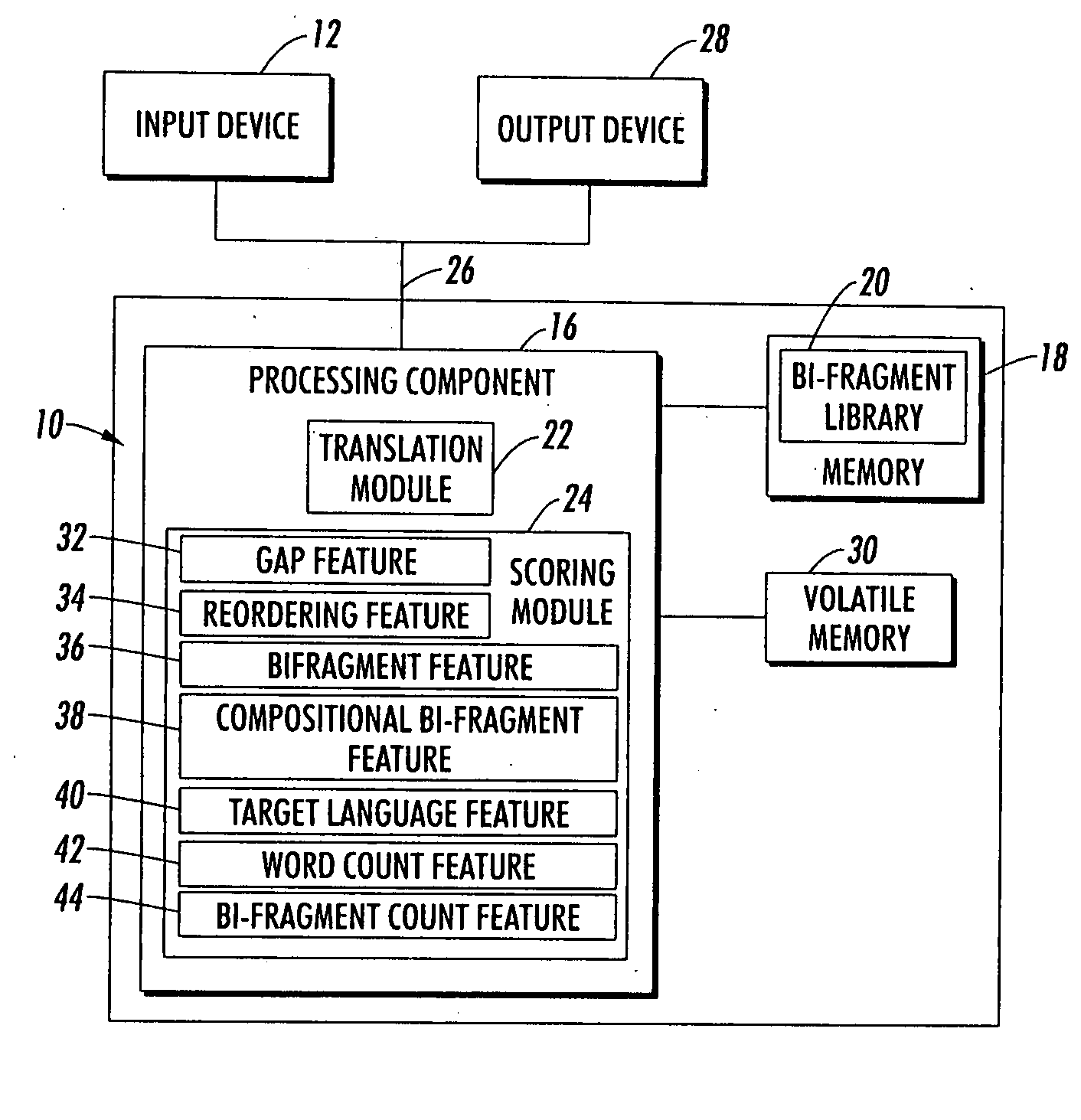Machine translation using non-contiguous fragments of text
- Summary
- Abstract
- Description
- Claims
- Application Information
AI Technical Summary
Problems solved by technology
Method used
Image
Examples
example
[0138] A prototype of the machine translation method described above was implemented. Libraries comprising contiguous and non-contiguous bi-phrases were developed and evaluated on samples of text. This has allowed the feasibility of the approach to be demonstrated. Furthermore, experiments have been conducted, to assess the impact of using non-continuous fragments in translation. These experiments have shown that this method allows for improved translation quality. The details of these experiments and results are described in Simard.
[0139] The results demonstrated that adding non-contiguous bi-phrases can be fruitful in phrase-based statistical machine translation. The results suggest that concentrating on bi-phrases with 3 gaps or less was found to afford a good compromise for providing improved translation while allowing control of exponential growth of the libraries. The results suggest that constructing increasingly large bi-phrases does not necessarily lead to better translati...
PUM
 Login to View More
Login to View More Abstract
Description
Claims
Application Information
 Login to View More
Login to View More - R&D
- Intellectual Property
- Life Sciences
- Materials
- Tech Scout
- Unparalleled Data Quality
- Higher Quality Content
- 60% Fewer Hallucinations
Browse by: Latest US Patents, China's latest patents, Technical Efficacy Thesaurus, Application Domain, Technology Topic, Popular Technical Reports.
© 2025 PatSnap. All rights reserved.Legal|Privacy policy|Modern Slavery Act Transparency Statement|Sitemap|About US| Contact US: help@patsnap.com



